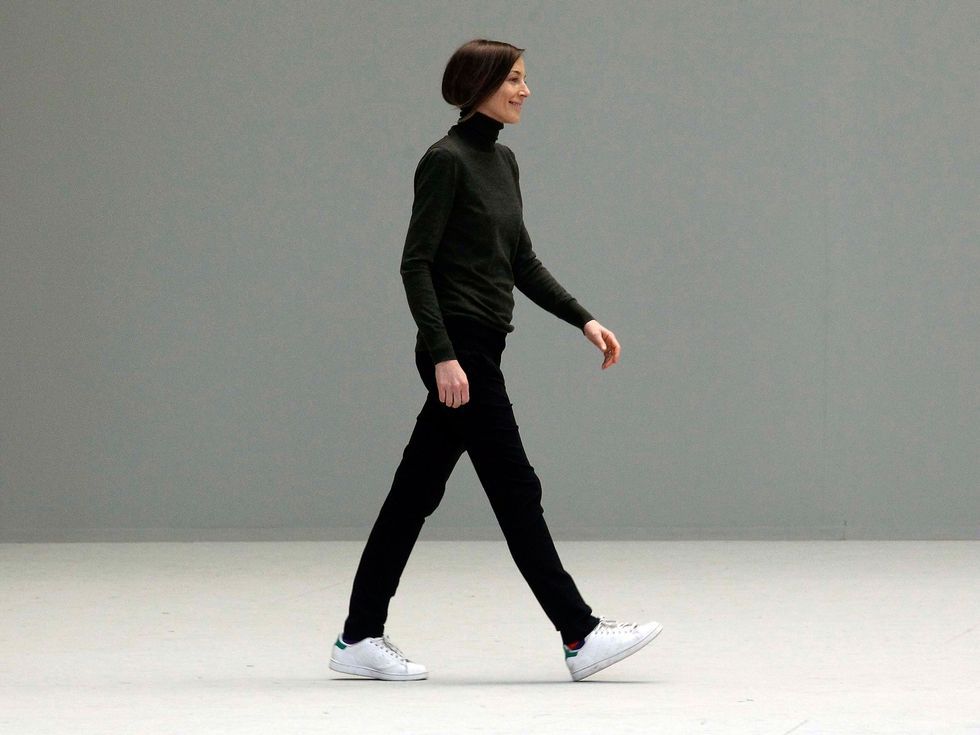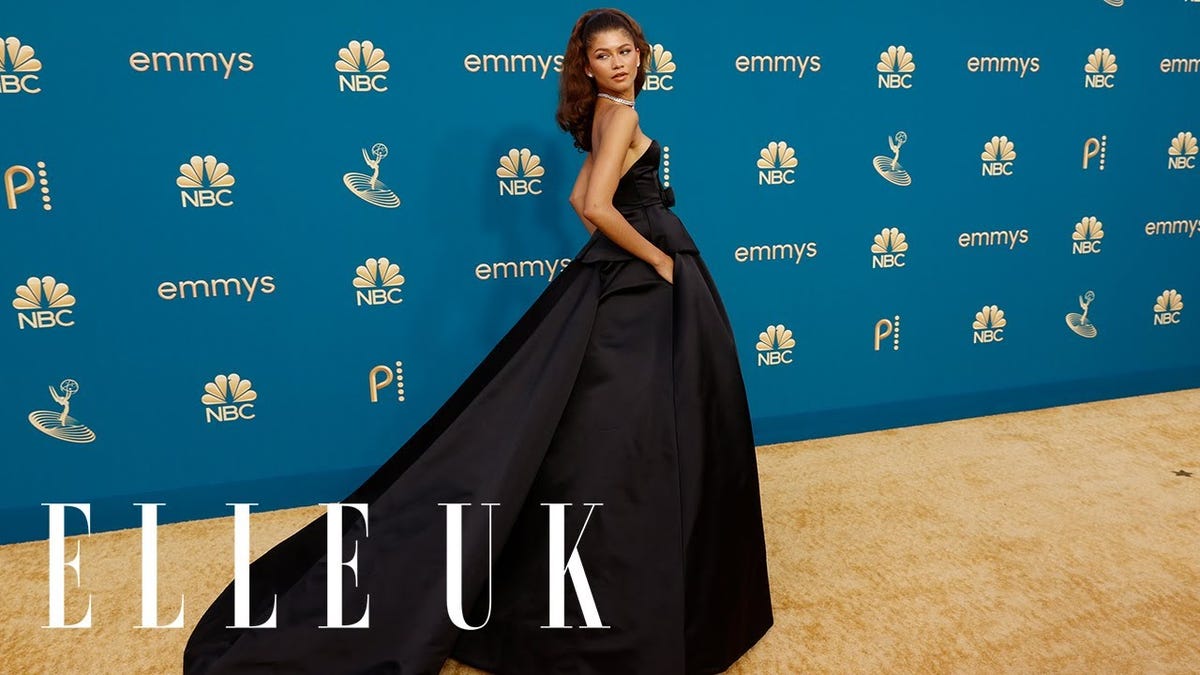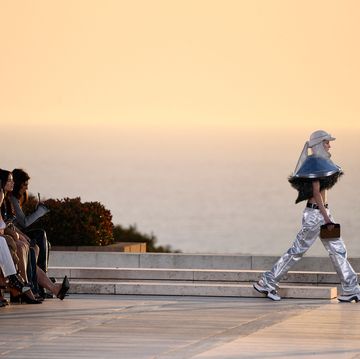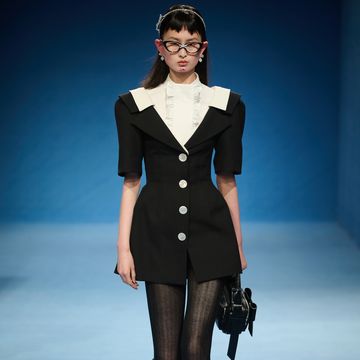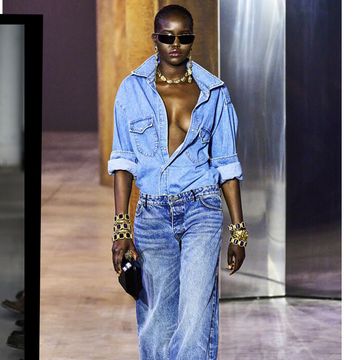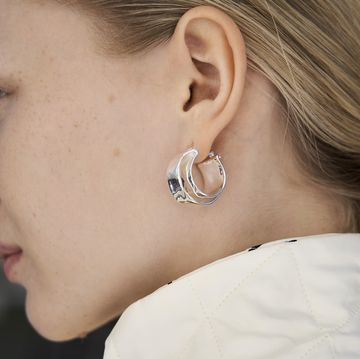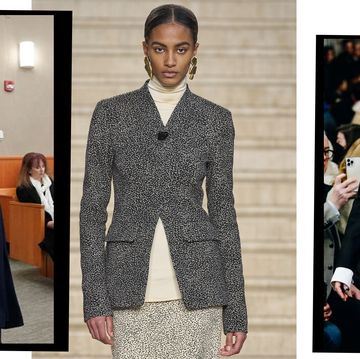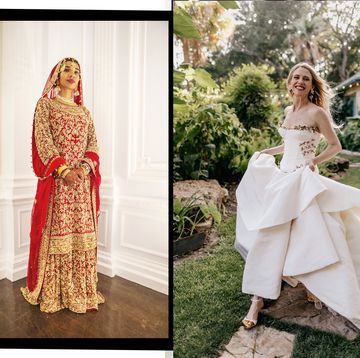Siobhan (Shiv) Roy’s wardrobe, in hit series Succession, is basically a character unto itself at this point. Reams have now been written about its ebbs and flows, but not for the reasons you might usually expect.
In recent decades, heroines with headline-making outfits have included Carrie Bradshaw, Serena Van Der Woodsen and, of course, Emily Cooper of Emily in Paris. They've inspired column inches for their outlandishness. We've followed them with either envy or disdain, as each expressive, usually logo-centric look dazzled us from behind the screen.
But when it comes to Shiv Roy, fictional wardrobes, particularly those belonging to female characters, have rarely been as muted. By relying on a heavy rotation of The Row and Max Mara suits, H&M turtlenecks and Ralph Lauren coats, Roy’s clothes attempt to fly mostly under the radar. When she makes a rare misstep, it sticks out glaringly, bringing her outfits into sharp focus, before they slip back into the realms of the relatively unremarkable. A dignified daily uniform of crisp, classic tailoring is the armour with which she fights to be taken seriously by her family.
Her clothes whisper, rather than shout. Among the one per cent she mingles with, Roy blends in seamlessly. There are no 'ludicrously capacious' bags and she understands the sartorial status quo, aiding in her ability to be viewed as more than just Logan Roy’s daughter. Her husband Tom’s wardrobe is similarly predictable with his Moncler gilets. So too is her brother Kendall’s, who relies upon a coterie of Bruno Cucinelli two-pieces.
Given these characters' perceived proximity to success - or at least the illusion of being on top - it’s no wonder that '#ShivRoy' has amassed just shy of 67 million views on TikTok, with users making videos that analyse and laud Roy’s predictably smart-casual uniform. According to Google Trends, over the past five years since Succession made its debut, searches for ‘Shiv Roy outfits’ have spiked by 300%, In a departure from the bursting forth in riotous colours that we saw post-pandemic, is this a sign that we're hanging up the bells and whistles, returning once again to uniform dressing?
Uniforms were introduced into schools in the UK as early as the 16th century, according to fashion historian Dr. Kate Strasdin, when charity schools such as Christ’s Hospital in London created a range of garments for their pupils as an indication of their place in the world. After the passing of the Elementary Education Act in 1870, schools across the country implemented uniforms. 'It began with sports kits more generally but then from the 1920s onwards it was more common to see uniforms for everyday wear and not just sporting activities,' Dr. Strasdin tells ELLE UK.
According to fashion psychologist and author of Big Dress Energy, Shakaila Forbes-Bell, uniforms help wearers to feel like a part of a collective. 'From a young age, uniforms help people to understand that they’re part of something bigger than just themselves,' Forbes-Bell says. 'Uniforms can also help children and adolescents to focus on their studies, rather than their outward appearance at a self-conscious time in their development.'
But the psychology of a uniform extends beyond the concept of forming a collective. It has the potential to sharpen our focus when we most need it. It’s estimated that the average adult makes 35,000 decisions everyday, a fact which informed the social psychologist Roy F Baumeister’s coining of the term 'decision fatigue' in 1998. Based on Sigmund Freud’s theory of ego depletion, it describes the way a person’s choices become poorer the more decisions they are forced to make. In short: in the adoption of a daily uniform, we simplify our decision-making, re-focussing on the work at hand and increasing, one might posit, our chances of success.
Uniformed dressing has cemented its place in recent history. Pre-pandemic, we often looked to pillars of cultural and financial success for their formula. And for many, it involved a predictably routine wardrobe of basic staples. American inventor and Apple co-founder Steve Jobs was known for owning over 100 Issey Miyake black turtleneck jumpers, which he wore almost exclusively, with blue Levi’s 501 jeans and Birkenstocks, an old pair of which raised a record-breaking $218,750 (£175,531.56) at auction last year. Anna Wintour is rarely seen without her black Chanel sunglasses, a calf-length dress and court shoes. The late Karl Lagerfeld, former creative director of Chanel and Fendi and the subject of this year’s Met Gala, owned 1,000 versions of the same high-collared white shirt that he wore with a tailored black jacket and black sunglasses.
More recently, we've seen the idea of uniform take centre stage among content creators, who've shaped their personal brands by honing a streamlined and identifiable aesthetic. When Sylvie Mus, a Paris-based stylist, started regularly posting images of her crisp monochromatic uniform on Instagram, her following exploded and, at the time of writing, stands just shy of 100,000. Mus’ fuss-free approach to dressing has led her to the kind of success aspired to by many. 'My go-to looks come to the rescue most days,' she says. 'It feels liberating not to hop on every new trend and instead focus on what I already have in my wardrobe.'
Swedish content creator Matilda Djerf’s classically Scandinavian attire enabled her to establish her eponymous label Djerf Avenue in 2019, which made approximately $22 (£17.66) million in sales last year alone. Jeanne Damas, a Parisian content creator, similarly segued the following she gained for her classically French uniform into her brand Rouje, which doesn’t disclose sales figures but now employs an international team of 120 members of staff and will open bricks-and-mortar stores in New York, Paris and London throughout 2023.
In fact, it was only for a moment, post-pandemic, that we saw uniforms cast to the wayside. As we emerged from the loungewear chrysalis of isolation, the compulsion to make up for lost time was strong, and we crammed partywear and self-expression into every single look. Sequins, leather, feathers and colour exploded into the streets, with fashion-scene barometers like Tagwalk reporting marked increases in the popularity of any style that screamed loudly that lockdown was over.
But now that we've got all that out of our systems, the balance is being redressed. More often at the moment, it seems we're looking to curate a rail of staples, with a rotation of interchangeable basics, to lean into fuss-free dressing each day. On TikTok, the #CapsuleWardrobe has been viewed 1 billion times, with users making videos showing the ease with which you can get dressed once sartorial decisions have been pre-made. According to StitchFix, searches for ‘capsule wardrobe’ spiked by 178% in January of this year alone.
The long-awaited return of Phoebe Philo - the doyenne of pared-back 'quiet luxury' - later this year only cements our desire for a more simplified approach to dressing. Philo’s take on scaled-back dressing transformed a generation of women’s wardrobes and showed how simple, desirable – and indeed stylish – a uniform can be.
Forbes-Bell credits this to the 'bread and butter of fashion psychology', the term 'enclothed cognition', which was coined by Hajo Adam and Adam D Galinsky, researchers from Northwestern University, in their 2012 experiment that aimed to interrogate the ways in which clothing can influence the wearer’s psychological state. The study deciphered that wearing clothes that we feel define who we are, or at least who we want to be, not only increases our psychological state but enhances our performance in tasks, too.
'Clothes are a tool with which we present ourselves to the world and we embody the meanings that we ascribe to certain outfits,' says Forbes-Bell. 'So if you have a suit, for example like ones that Shiv wears in Succession, and you associate that suit with success and prestige, then enclothed cognition suggests that you’re going to embody those characteristics every time you wear that suit.'
The phenomenon of 'overchoice', according to Forbes-Bell, where a person is faced with too many choices of what to wear so chooses to reject the act of choosing at all, is a nod to the power of a daily uniform.
'When somebody’s building a brand, the founder becomes part of the story,' she concedes. 'It’s harder to sell something that’s eclectic and different and changing all the time. People are attracted to reliability and conformity, and that’s exactly what a uniform provides.'



